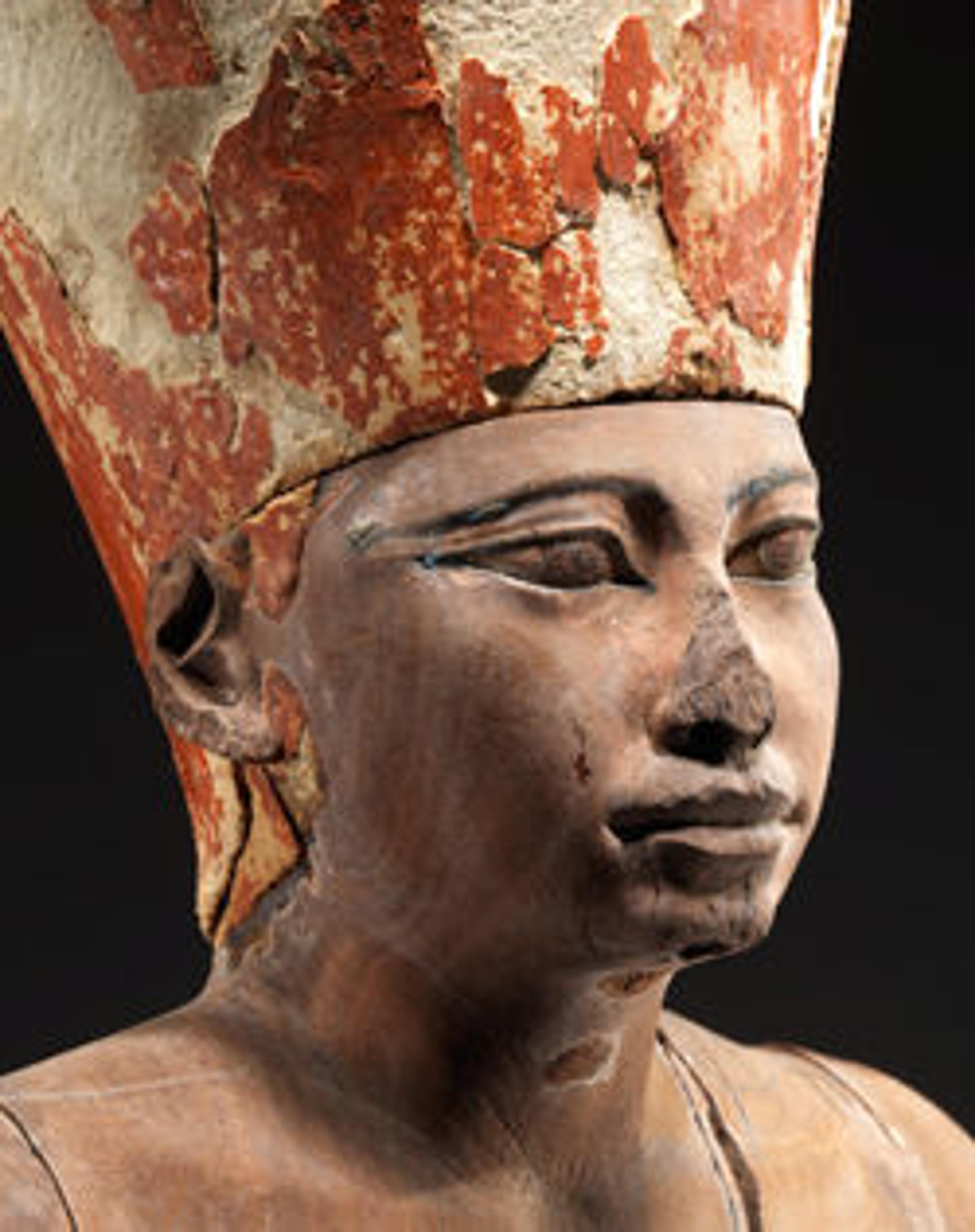Ritual Implement Dedicated by a King Senwosret to Nebhepetre Mentuhotep II
Known as a pesesh-kef, this magical instrument has its origins in early Egyptian culture. It may represent an implement used to cut the umbilical cord. The pesesh-kef was employed in the Opening of the Mouth ritual, during which a priest would hold the implement to the mouth of a cult statue or mummy, allowing it to receive offerings. The inscription indicates that this implement was dedicated to Nebhepetre Mentuhotep II by one of the Senwosret kings, likely Senwosret III.
Artwork Details
- Title:Ritual Implement Dedicated by a King Senwosret to Nebhepetre Mentuhotep II
- Period:Middle Kingdom
- Dynasty:Dynasty 12
- Date:ca. 1961–1840 B.C.
- Geography:From Egypt
- Medium:Hornblende granite
- Dimensions:H. 21 cm (8 1/4 in.); W. 6.5 cm (2 9/16 in.); Th. 1 cm (3/8 in.)
- Credit Line:Rogers Fund, 1924
- Object Number:24.2.1
- Curatorial Department: Egyptian Art
More Artwork
Research Resources
The Met provides unparalleled resources for research and welcomes an international community of students and scholars. The Met's Open Access API is where creators and researchers can connect to the The Met collection. Open Access data and public domain images are available for unrestricted commercial and noncommercial use without permission or fee.
To request images under copyright and other restrictions, please use this Image Request form.
Feedback
We continue to research and examine historical and cultural context for objects in The Met collection. If you have comments or questions about this object record, please contact us using the form below. The Museum looks forward to receiving your comments.
